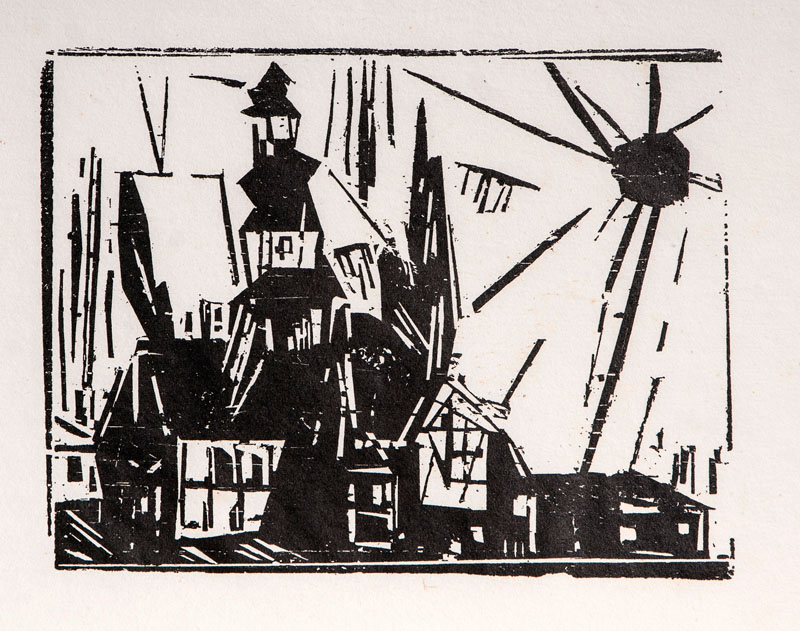Troistedt
Lyonel Feininger (New York 1871 - New York 1956)

Lot-No. 162
1978, woodcut, 17 x 22 cm, at the lower margin stamp 'Zweiter posthumer Neudruck v. Originalholzstock Lyonel Feiningers',on the reverse stampe of the Griffelkunst, unframed. - Versatile American-German painter, draughtsman, caricaturist a. object artist, one of the leading Bauhaus teachers a. one of the most important exponents of modern art. F., son of German parents, studied in Hamburg, Berlin a. Paris a. began working as caricaturist for European a. American Magazines. W. Gropius, founding director of the Bauhaus, made F. professor for graphic art at the Weimar Bauhaus in 1919. The Nazis judged F.s art as 'degenerate' a. the artist moved to New York with his family in 1937. The MoMA showed a great retrospective of F.s art in 1944. From beginnings as caricaturist F. developed into a painter whose cubist style dissolves objects in transparent crystalline surfaces. He preferred marine landscapes a. townscapes, the environments of Weimar play an important role among them. He also created sculptures a. toys.
Lyonel Feininger: Troistedt
Lyonel Feininger (New York 1871 - New York 1956)
Troistedt
Lot-No. 162
1978, woodcut, 17 x 22 cm, at the lower margin stamp 'Zweiter posthumer Neudruck v. Originalholzstock Lyonel Feiningers',on the reverse stampe of the Griffelkunst, unframed. - Versatile American-German painter, draughtsman, caricaturist a. object artist, one of the leading Bauhaus teachers a. one of the most important exponents of modern art. F., son of German parents, studied in Hamburg, Berlin a. Paris a. began working as caricaturist for European a. American Magazines. W. Gropius, founding director of the Bauhaus, made F. professor for graphic art at the Weimar Bauhaus in 1919. The Nazis judged F.s art as 'degenerate' a. the artist moved to New York with his family in 1937. The MoMA showed a great retrospective of F.s art in 1944. From beginnings as caricaturist F. developed into a painter whose cubist style dissolves objects in transparent crystalline surfaces. He preferred marine landscapes a. townscapes, the environments of Weimar play an important role among them. He also created sculptures a. toys.


